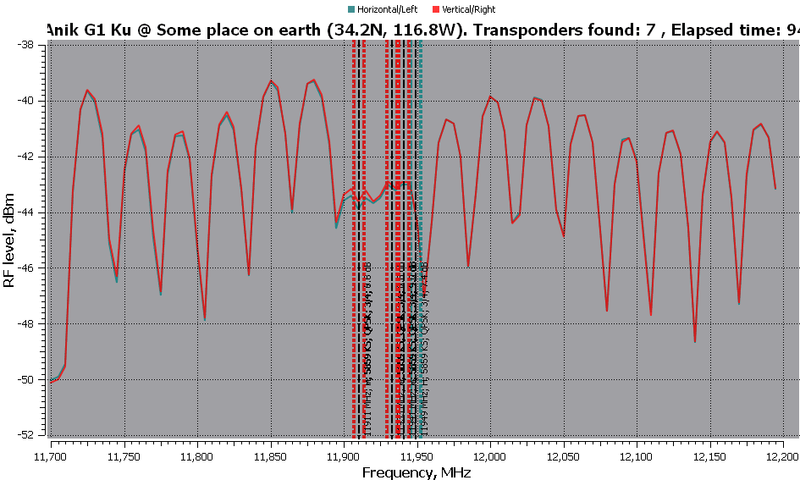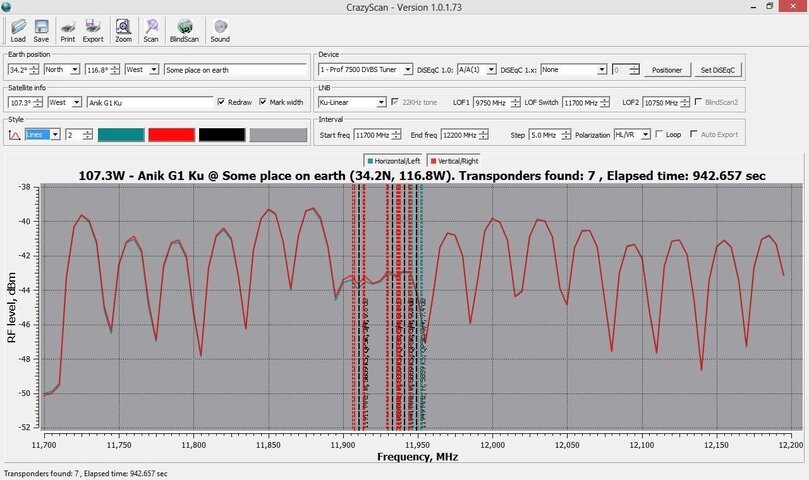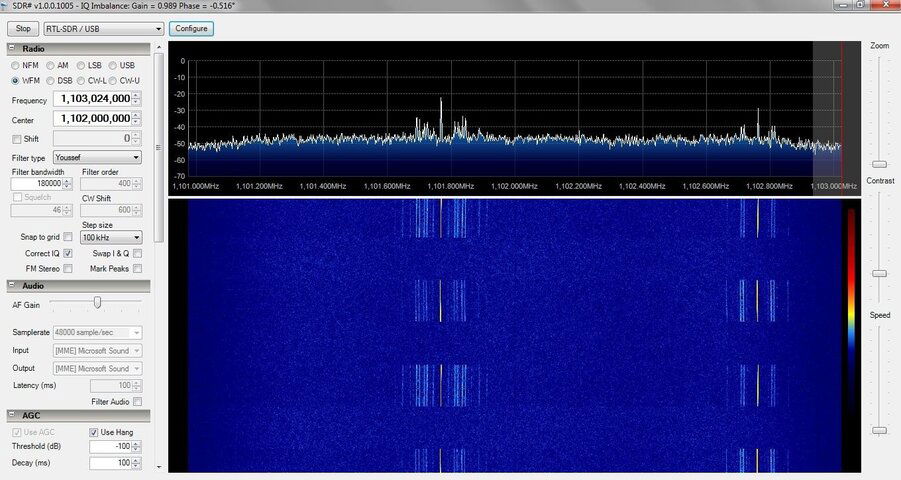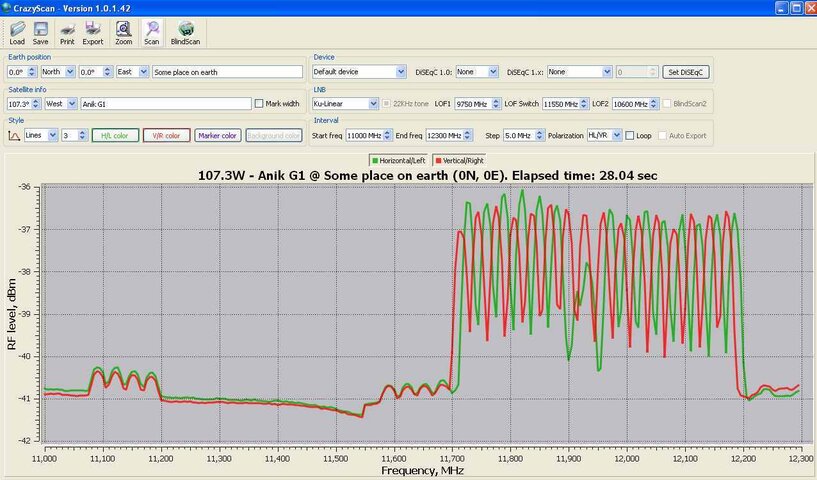One by one, the transponders on Anik G1 have been lighting up today. At my location near Santa Fe, New Mexico, the signal is pretty weak compared to Anik F1r, but at least there is some signal.
In the attached scan the signal from Anik G1 is below 11,700 MHz and Anik F1r is above. This is with a Geosat Pro 90 cm dish with an Avenger PLL321 universal LNBF.
Unlike most satellites, the H and V transponders are not offset in frequency from each other. Probably this was a more efficient use of the two 125 MHz chunks of spectrum they are licensed for, but might make LNB skew more critical.
I don't have a receiver that can lock these signals, so no way to get a quality number, if it would even lock at these low levels. Anyone else seeing anything?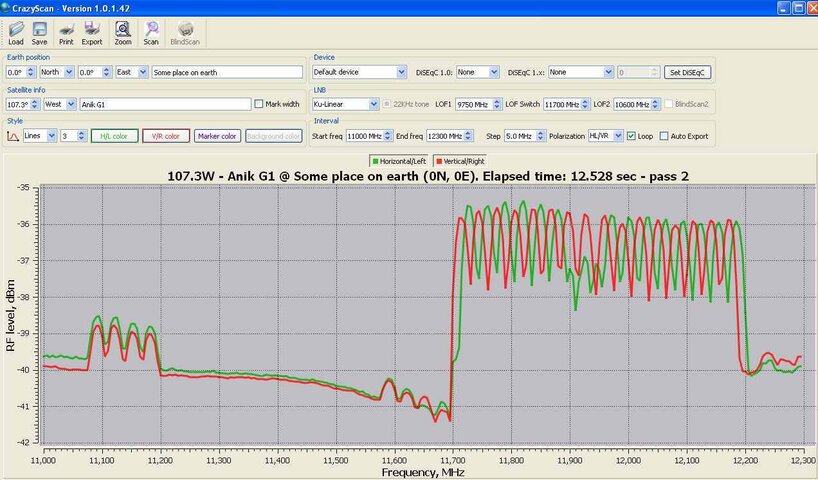
In the attached scan the signal from Anik G1 is below 11,700 MHz and Anik F1r is above. This is with a Geosat Pro 90 cm dish with an Avenger PLL321 universal LNBF.
Unlike most satellites, the H and V transponders are not offset in frequency from each other. Probably this was a more efficient use of the two 125 MHz chunks of spectrum they are licensed for, but might make LNB skew more critical.
I don't have a receiver that can lock these signals, so no way to get a quality number, if it would even lock at these low levels. Anyone else seeing anything?



